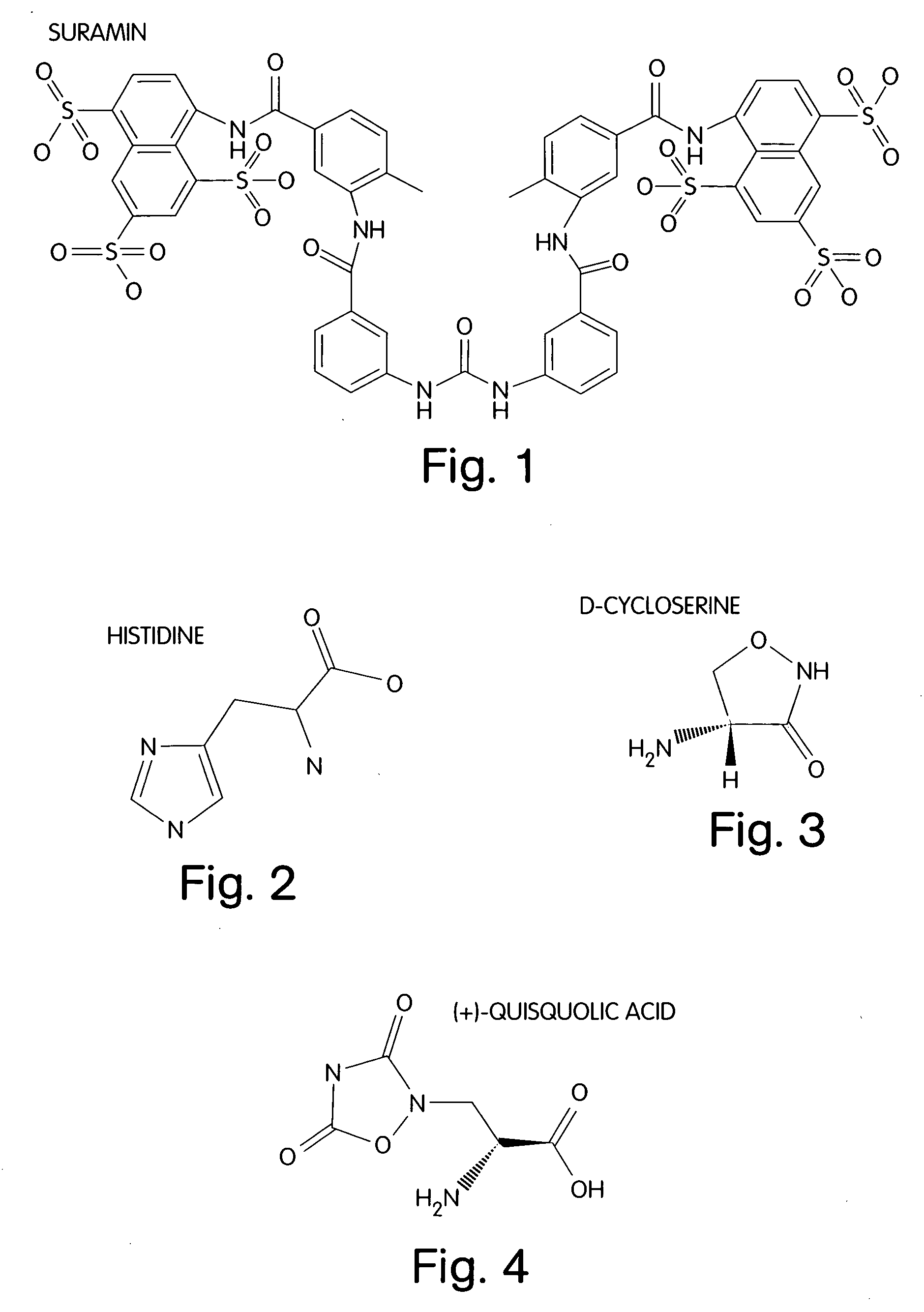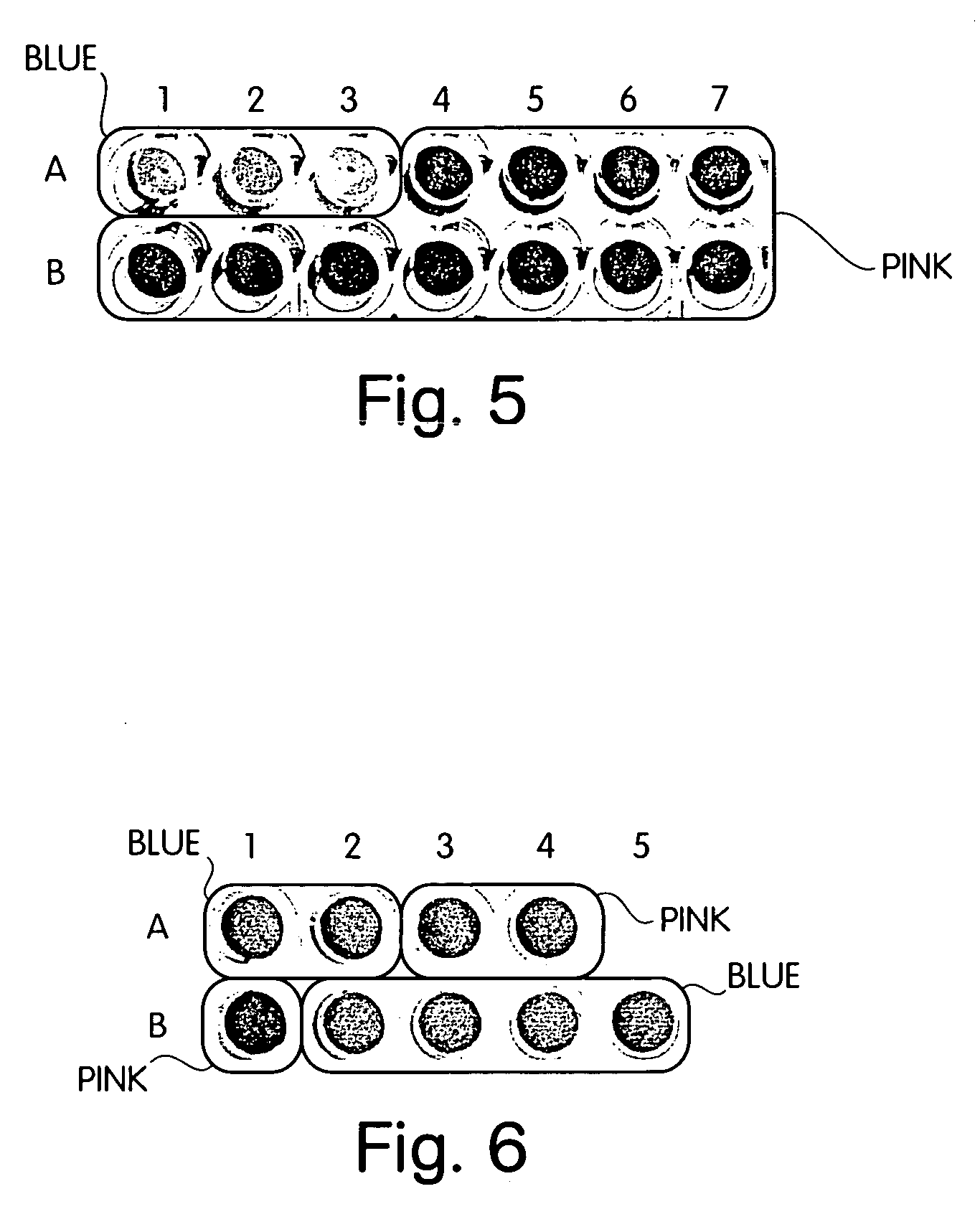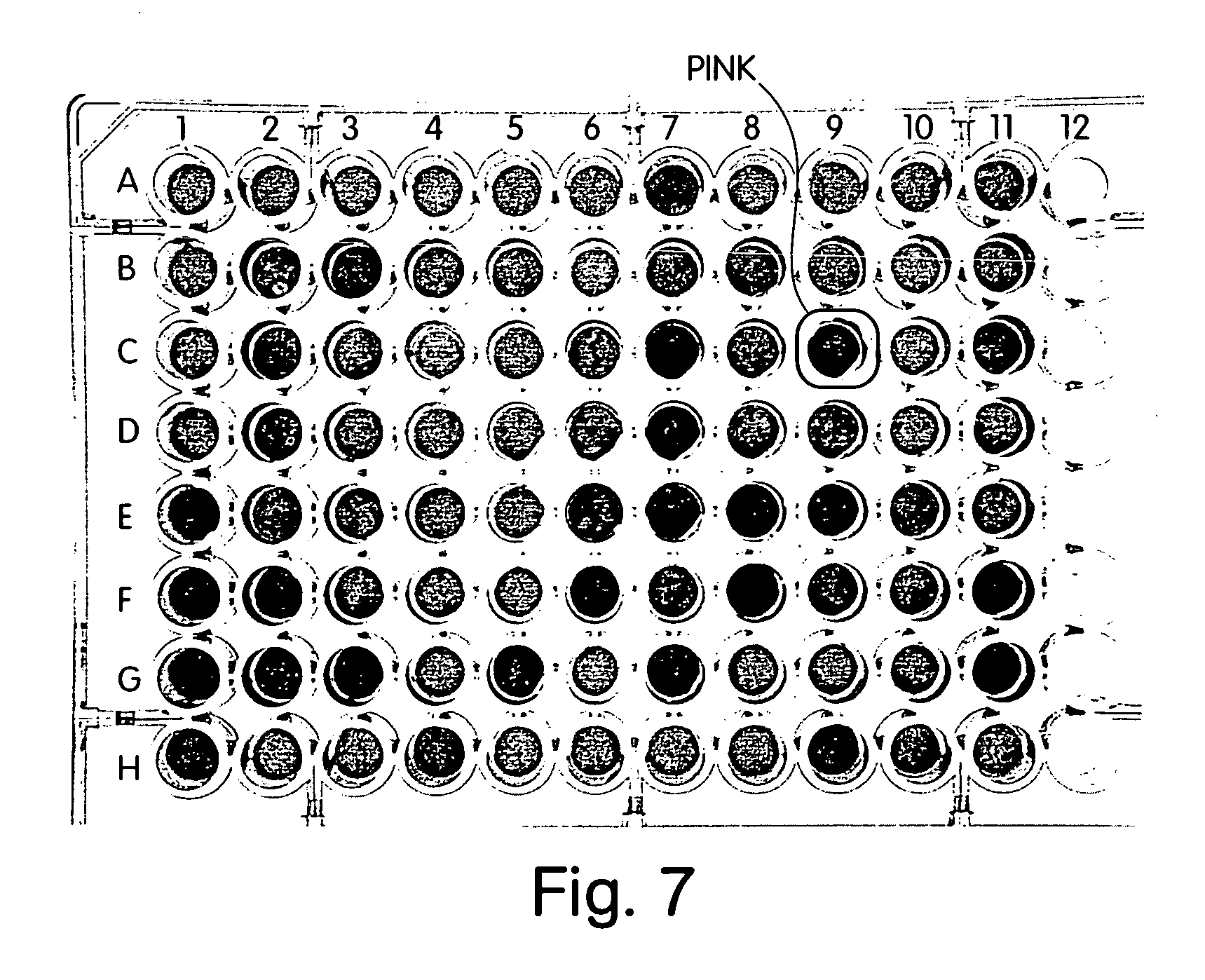Endostatin-like angiogenesis inhibition
an angiogenesis inhibitor and endostatin technology, applied in the field of cancer treatment, can solve the problems of difficult administration, degraded by the body, extremely expensive production, and doubtful whether enough protein therapeutics could be produced to treat all the required cancer patients, and achieve the effect of enhancing emission and inhibiting quenching
- Summary
- Abstract
- Description
- Claims
- Application Information
AI Technical Summary
Benefits of technology
Problems solved by technology
Method used
Image
Examples
example 1
Detection of the Biotin-Streptavidin Interaction Using Gold Colloids
[0053] Gold colloids were prepared using a mixture of 10 μM biotin thiol, 10 μM NTA thiol, and 580 μM C11 thiol. Control colloids were prepared using 20 μM NTA thiol and 580 μM C11 thiol for a total thiol concentration of 600 μM. After deposition, the colloids were heat cycled in 400 μM EG3 thiol, and charged with nickel sulfate. A streptavidin stock solution (1 mg / mL) was prepared in 10 mM sodium phosphate buffer, 100 mM sodium chloride, pH 7.4 (buffer) To detect the biotin-streptavidin interaction, 60 μL buffer, 10 μL streptavidin, and 30 μL colloids, were mixed in a well of a 96-well plate. The plate was incubated at room temperature and observed for color change. At the three highest concentrations of streptavidin (0.1 mg / mL, 0.01 mg / mL, 0.001 mg / mL) the colloids presenting biotin turned blue (wells A1, A2, A3, FIG. 5). At lower concentrations of streptavidin, the wells containing biotin colloids remained pink ...
example 2
The Angiogenesis Inhibitor, Endostatin Specifically Binds to a His-Tagged GRGDS Motif Peptide (HHHHHHSSSSGSSSSGSSSSGGRGDSGRGDS), but Angiostatin Does Not
[0055] 200 μL NTA-Ni agarose (Qiagen) were washed 2× with 100 μL ddH2O, then with wash buffer A, containing 50 mM NaH2PO4, 300 mM NaCl, and 10 mM imidazole at pH 8.0.
[0056] A synthetic peptide, was dissolved in DMSO then diluted in phosphate buffer to a final concentration of 1 mM. 100 μL of this peptide solution was incubated with the NTA-Ni resin for 20 minutes at room temperature to allow binding of the histidine-tagged peptide to the NTA-Ni resin. The resin was then pelleted and the supernatant was removed. The resin was washed in buffer A. The peptide bound resin was then divided into two aliquots. A first aliquot was mixed with 100 μL human recombinant endostatin (0.1 mg / mL in 10 mM sodium phosphate buffer, 100 mM sodium chloride, pH 7.4, diluted from stock endostatin, Calbiochem 324746). A second aliquot was mixed with 100 ...
example 3
Drug Screen for Synthetic Mimics of Endostatin
[0058] 40 μM NTA colloids presenting a His-tagged peptide containing a tandem repeat GRGDS motif (Sequence ID No. 1; Table 1) were prepared by incubating 2.1 mL colloids with 210 μl 100 μM His-RGD for ten minutes pelleting the colloids to remove excess unbound peptide, and resuspending the colloids in 10 mM sodium phosphate buffer (pH 7.4). Negative control colloids were prepared by substituting an irrelevant His-tagged FLR peptide (Sequence ID No. 2, see Table 1). 25 μl GRGDS-colloids (or random peptide-colloid for negative controls) was added to each well of a 96-well plate along with 65 μl sodium phosphate buffer per well. DMSO was added in place of a drug to the positive and negative controls. 5 μl of 0.1 mg / ml endostatin (Calbiochem) was added to each well. The plate was incubated in room temperature and observed for color change. After about 20 minutes, the positive controls changed color from pink to blue as the endostatin bound ...
PUM
 Login to View More
Login to View More Abstract
Description
Claims
Application Information
 Login to View More
Login to View More - R&D
- Intellectual Property
- Life Sciences
- Materials
- Tech Scout
- Unparalleled Data Quality
- Higher Quality Content
- 60% Fewer Hallucinations
Browse by: Latest US Patents, China's latest patents, Technical Efficacy Thesaurus, Application Domain, Technology Topic, Popular Technical Reports.
© 2025 PatSnap. All rights reserved.Legal|Privacy policy|Modern Slavery Act Transparency Statement|Sitemap|About US| Contact US: help@patsnap.com



